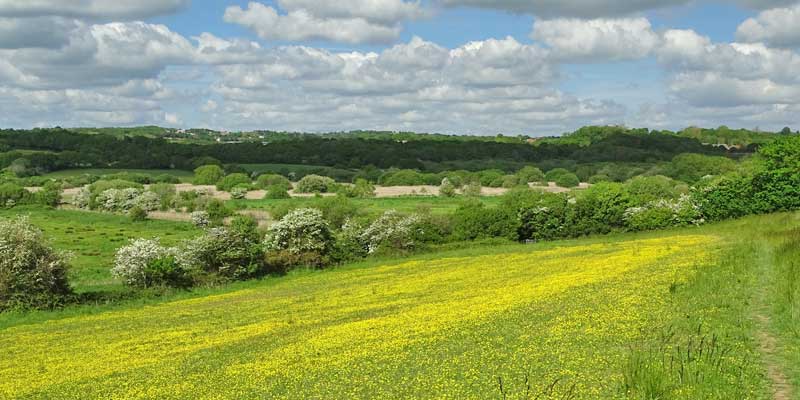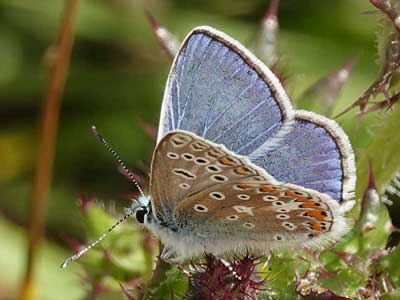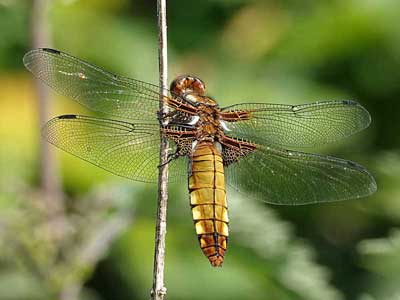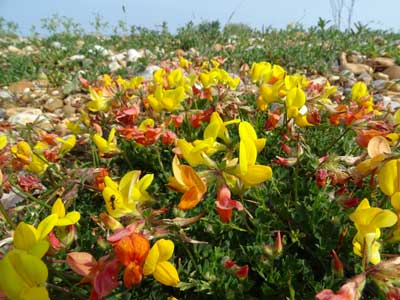Nature's Calendar

May

Small White and Common Blue butterflies will be flying in increasing numbers in May, along with Small Heath, Small Copper and Brown Argus. Migrant butterflies whose numbers fluctuate from year to year are the Painted Lady, which migrates from North Africa, and the Clouded Yellow from Southern Europe, both of which start to appear in May. Their numbers depend very much on the weather conditions across Europe and occasionally we will get a 'bumper' year.

Most of the damselflies start to appear in May. The ones you are most likely to spot are the Azure, the Blue-tailed Damselfly and the two Demoiselles, although several rarer species will be about. Of the dragonflies, the Broad-bodied Chaser and the Four-spotted Chaser are likely to be seen. The male Broad-bodied Chaser has a powder blue abdomen instead of the yellow-ochre seen here in the female. Both have the brighter yellow 'sidelights' but all the colours fade as the insects age.

Both Red and White Clover start to flower in May, and Birds-foot-trefoil is at it’s most colourful as the buds are red but the flowers turn yellow soon after opening. Ox-eye Daisies begin to flower along with Cleavers, Silverweed, Wood Avens, Meadow Vetchling, Yellow Iris and many others. Of the shrubs and trees Hawthorn, Holly and Spindle will be in flower.

Look out for Swans with cygnets and Grey Lag Geese with goslings. Sedge Warblers and Reed Warblers will have arrived and be heard if not often seen. Swifts arrive in May and can often be seen hunting for insects on the wing. Blackcaps and Whitethroats will have arrived and be singing from the hedgerows.

